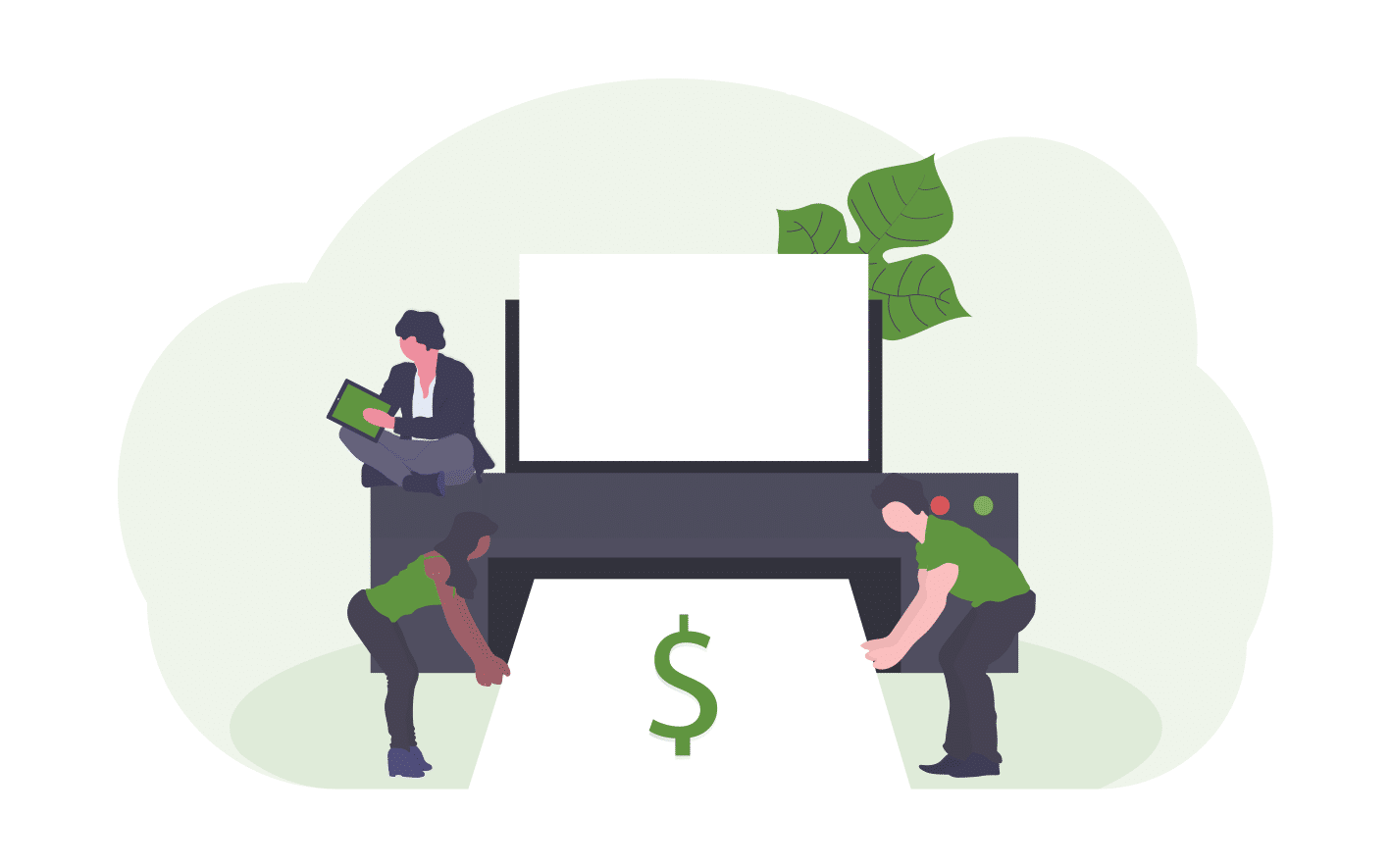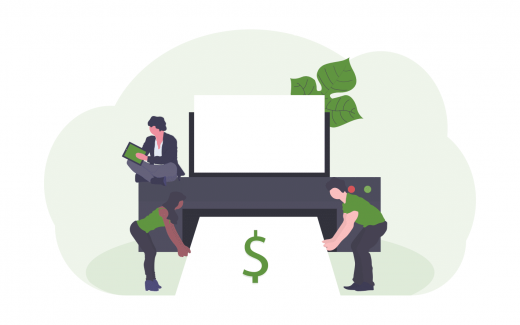ACH Payments: What Your Business Needs to Know

Your business depends on flexibility in all areas, including how you accept payments. The more payment options you give customers, the more likely they are to buy from your company.
Automated clearing house (ACH) payments have given companies a way to do this. According to the National Automated Clearing House Association (NACHA), ACH payments accounted for nearly $ 56 trillion in payments between consumers, businesses, governments, banks, and other entities in 2019. Why? ACH payment processing transfers small or large amounts of money seamlessly, safely, and dependably. Consequently, ACH processing has become a trusted way for people and organizations to move money digitally.
Make no mistake: People and businesses appreciate having fast, online access to their money. Leveraging the power of ACH payments allows them to rely on digital wallets.
In 2020, consumer cash use decreased by 10 percentage points. As society continues to move toward more paperless forms of money, people have become accustomed to paying without cash. Additionally, they tend to write and receive fewer checks.
This move toward financial digitization makes now the right time for your company to consider adding ACH to your payment lineup. However, even if you already use it to deposit funds into your employees’ bank accounts directly, you’ll need a good idea of how ACH processing for business works to make it part of your operations.
What’s an ACH transaction?
An ACH transaction involves five different entities: the receiver, the originator, the originating depository financial institution (ODFI), the receiving depository financial institution (RDFI), and the ACH operator.
Working together, these parties swiftly send messages to one another and ensure that ACH transactions occur accurately and consistently.
Here’s a real-world example of an ACH credit transaction between a consumer and a business. After reading it, you’ll have a better understanding of how ACH transactions work:
Josh is a busy professional trying to make his life easier. He wants to set up automatic payments to cover his monthly auto insurance premium, so he doesn’t have to initiate payments every month — and possibly miss one by accident.
He authorizes his auto insurance agent to deduct his monthly premium from his checking account. As long as he has sufficient funds in his bank account, the transaction occurs like clockwork.
Five-Entity Language and Break Down the ACH processing
Now, let’s dissect the same scenario using the five-entity language and break down the ACH processing system.
In our example, Josh is the originator, and his bank is the ODFI. Josh’s auto insurance carrier is the receiver. As the receiver, the insurance carrier relies on its bank (which is its RDFI) to verify Josh’s information and send a request through the ACH operators to his ODFI.
Once the transaction is confirmed, the ODFI debits Josh’s account, making the funds available to his insurance carrier’s RDFI.
It’s uncomplicated, reliable, and efficient.
Does Josh think about the fact that he’s using an ACH system? Probably not. All he knows is that his insurance premiums will be handled. At the same time, his insurance carrier will never have to chase him to recover missing payments.
In the end, both parties get what they need. All the complexities and intricacies of the transaction happen thanks to the ACH, a central clearing facility that accepts information from the ODFI and sends the accurate amount of funding to the RDFI.
Credit and debit: The two types of ACH transactions
ACH payment processing doesn’t have to be recurring, as in the above scenario; it can also be handled as a one-time transaction or processed as a debit or a credit transaction.
During the debit transaction, the receiver authorizes the initial deposit. Next, the originator submits the deposit to its ODFI, verifying it and using the ACH operator line to communicate with the receiver’s RDFI. Finally, the receiver’s RDFI receives the ODFI’s deposit and releases the money into the receiver’s bank account.
Whether you’re initiating a credit or debit ACH payment, you can count on a network of ACH operators to settle transactions, move funds, and make connections. It’s a very predictable process that reduces any friction points between payers and payees.
Misconceptions about ACH payments
With so many benefits to ACH payments, you might wonder why more businesses don’t use them. The answer is that plenty of businesspeople have misconceptions about the ACH process — misconceptions that can cost companies in a real way.
This is why it’s important to know the major ACH misconceptions and uncover the facts about making ACH payments as a business.
One of the biggest misunderstandings about ACH payments is rooted in the belief that they take a substantial amount of time to reconcile. Companies believe they will have to wait for a long time before recouping funds or settling up accounts.
Though ACH payments don’t take place as quickly as other types of payments, they’re usually reconciled in no more than two business days. In some cases, the reconciliation is even faster. Some companies have even reported that their ACH payments take mere hours to process.
Another myth is that ACH payments are complicated to arrange for customers. Adding an ACH selection box to your invoicing paperwork is no different than adding lines for a credit card; you just need different information. As long as you give your customer a way to authorize ACH payments, neither of you should find the experience challenging.
Finally, business owners often hear that ACH payment processing comes with safety headaches or concerns. Unfortunately, this isn’t the case.
Like all online transactions, ACH payments must follow strict security regulations and guidelines to minimize the risk of data breaches. As such, they’re just as safe as other types of transactions. In addition, according to NACHA reporting, the fraud rate among ACH payments was lower than any other online payment method.
Additional upsides to ACH payments
Companies that want to expand their payment offerings may find ACH payments to be a great fit, thanks in no small part to the numerous advantages they offer.
A few of the most important benefits include free ACH debit transfers and low-cost ACH credit transfers. If you’re not sure whether you could save money by accepting ACH credit transfers, use a $ 3 per transaction rule.
Assume that each ACH credit transfer will cost about $ 3. Then, line up the $ 3 rule against your current monthly credit card processing transactions.
For instance, you might pay 3.5% per transaction in credit card processing fees. If your average transaction is $ 100, you’re paying $ 3.50 per transaction. Saving 50 cents per transaction could add up — especially if you expect multiple transactions per month.
Of course, many businesses have much higher average transactions. For example, let’s say you sell expensive equipment and routinely deal with payments of $ 10,000. In this scenario, you’d pay a $ 3 transaction fee rather than $ 350 (3.5% of $ 10,000).
If your company runs a subscription or membership service, using ACH payments can be particularly lucrative. Even if you have to wait 24 to 48 hours to get payments each month, you can plan ahead to draw those payments through the ACH payment system.
Will you have a bit of lag time? Sure. But you’ll quickly get an idea of when money “hits” your account. This allows you to predict your cash flow while still enjoying the affordable fees of ACH processing.
Best practices for incorporating ACH payments for business
Whether your brand has been around for a long time or you’re just getting started, you can take advantage of ACH payments. Use these techniques to get the most out of every ACH transaction:
1. Add ACH to your e-commerce payments.
You might have a brick-and-mortar store, but that doesn’t mean you can’t sell products online. Many businesses with physical locations accept orders digitally. Those orders can then be picked up curbside or shipped to the buyer.
Including ACH as one of the preferred payment options on your website is as easy as adding a few buttons and setting up a merchant account with your bank. If you’re trying to get customers to embrace ACH as a first choice, place the ACH payment option first.
You can also partner with other third-party providers that commonly use ACH to transfer funds, including PayPal and Stripe. You’ll pay for the convenience of working with the third-party provider, but you’ll also move cash rapidly — and most of their merchant fees are still lower than those of credit card companies.
The most important element of this step is to educate your customers. Unless you show them that they have choices, they won’t realize that they can use ACH. Therefore, do your best to keep your ACH payment processing selections front and center.
You might even want to write a blog post explaining why you’ve added ACH payment processing to answer any consumer questions.
2. Pay your team members through ACH payments.
How do you pay your employees and independent contractors? If you’re distributing physical checks, you might be making the process harder for everyone. Each time you issue paper checks, you have to get them to your people, and then they have to go to their banks to deposit or cash the checks.
About 90% of businesses already use some form of direct deposit, but the remaining 10% still rely on other methods to pay part-timers, full-timers, and seasonal workers. Plus, many companies don’t use ACH payment processing when paying freelancers and contractors.
Talk with your CFO or director of finance about conducting a companywide payment type audit. This can help you see whether it’s feasible to eliminate cutting and delivering paper checks. Doing more with direct deposit frees up valuable time and resources to devote to other responsibilities.
3. Resolve your corporate bills with ACH payments.
Your business might even want to pay its bills using ACH processing. Landlords, utility companies, internet providers, and subscription services frequently make ACH payments possible.
You might not have thought about having money pulled from your bank to cover monthly payments, but it can be a good way to ensure that the money goes directly to the creditor.
The same is probably true of your vendors. For example, do you constantly order parts or items from the same vendor? Ask if the vendor would enable ACH payments. That way, you could place orders and set up a fluid way to move money.
Remember: The faster you can complete a transaction, the sooner you can move on to your next task. Even if you’ve been getting points on your credit card for paying vendors or utilities, conduct an analysis.
Could the time and effort you save with ACH processing be worth moving away from credit card usage — especially if you have the cash available to cover bills?
4. Use ACH payments for your quarterly estimated taxes.
The federal government offers you choices when it comes to paying your taxes. Instead of using your corporate credit card, give yourself an added tax break by covering your estimated taxes with ACH payments.
Could you pay with a check? Yes, but it takes time. Instead of being hit with late fees because your check wasn’t posted on time, you could pay your taxes and avoid any necessary penalties.
You’ll need the money in your account immediately to use ACH processing, but you should have no problems as long as you’ve set aside funds for tax purposes.
Ideally, you want your customers to feel like working with you is easy, fast, and satisfying. Adding ACH payment processing to your operations can be one of the simplest ways of staying modern and attracting your target consumer.
Getting on board with other ways of using ACH payments for business can help you improve your performance and overall effectiveness.
Business & Finance Articles on Business 2 Community
(41)


